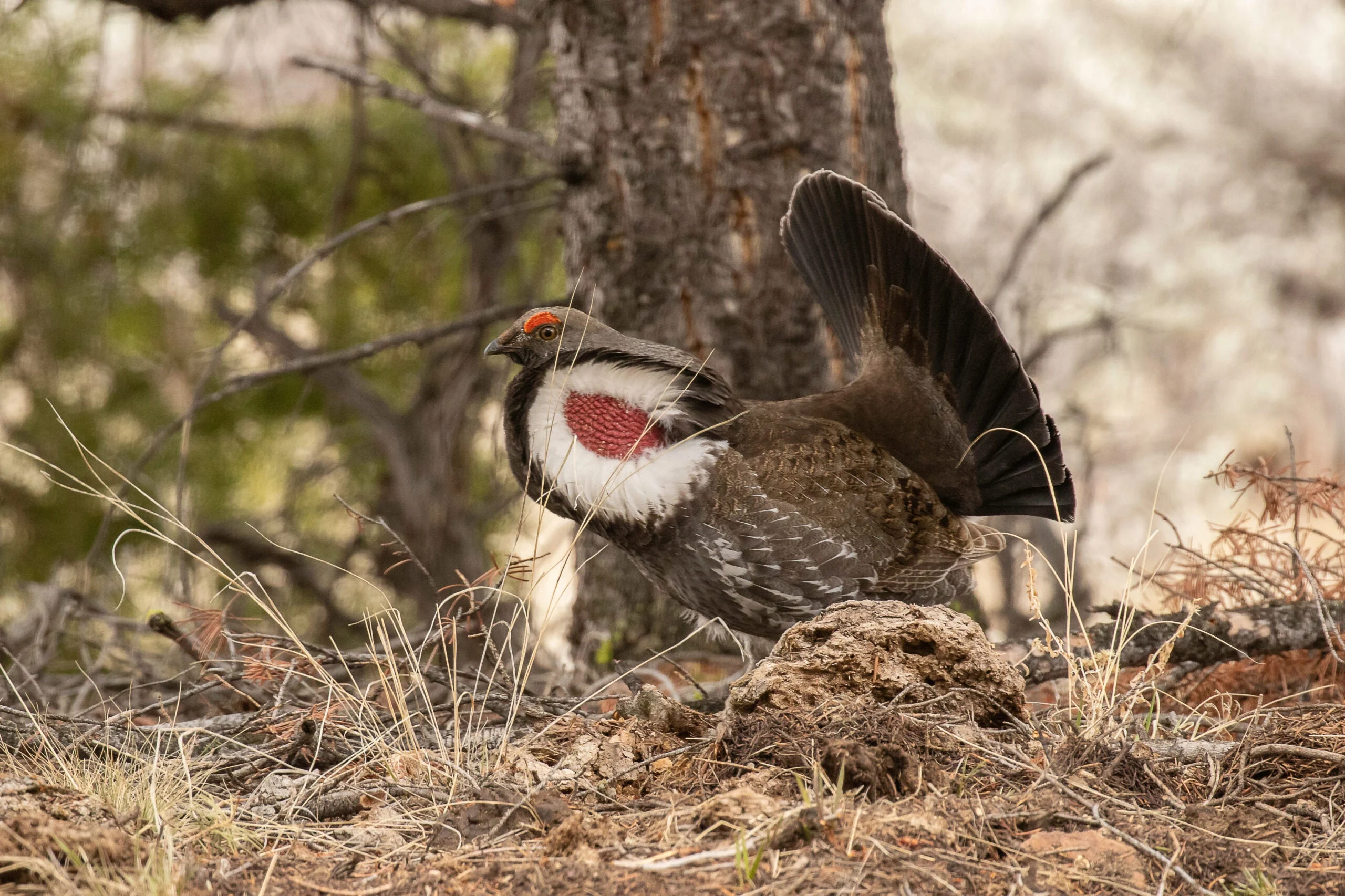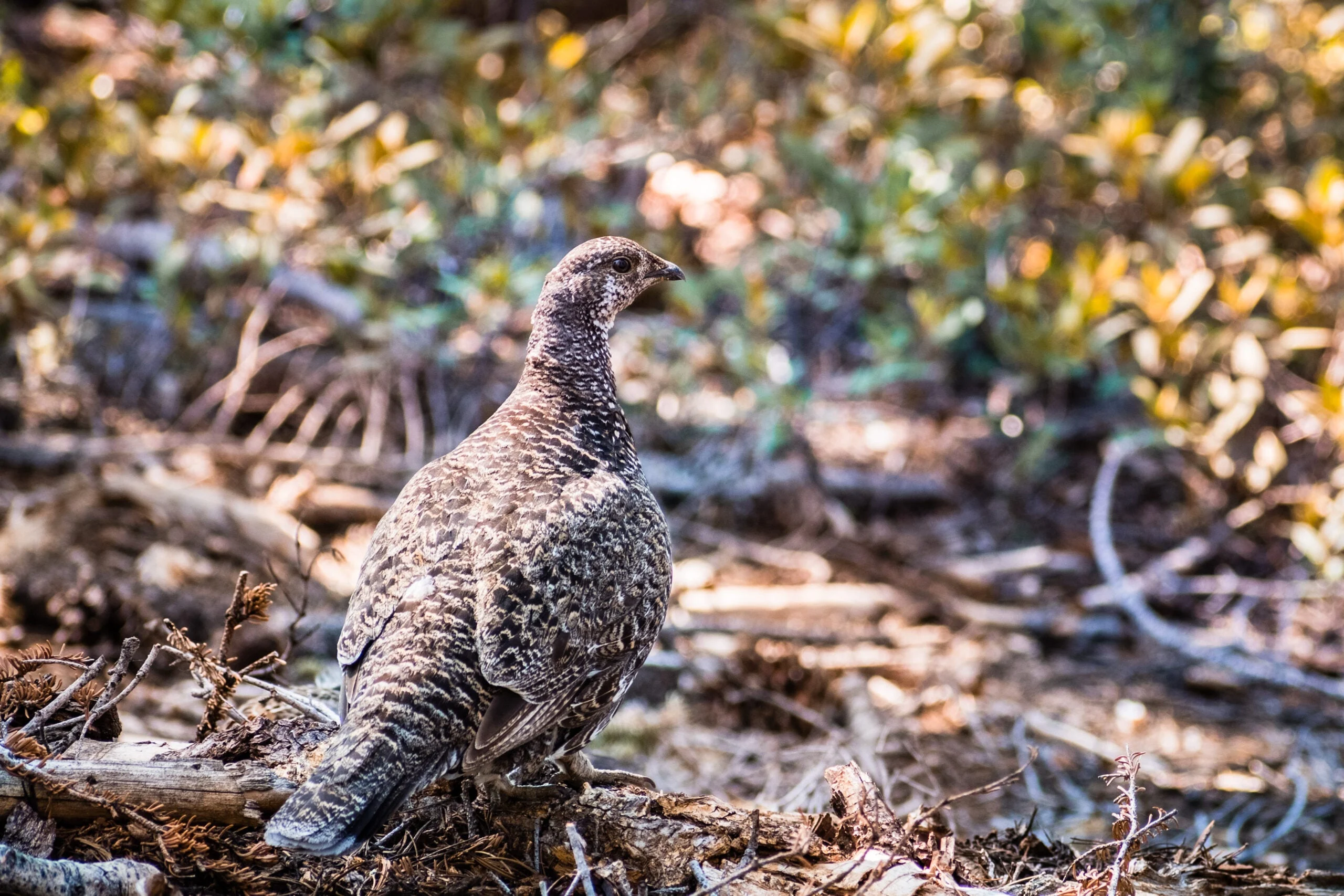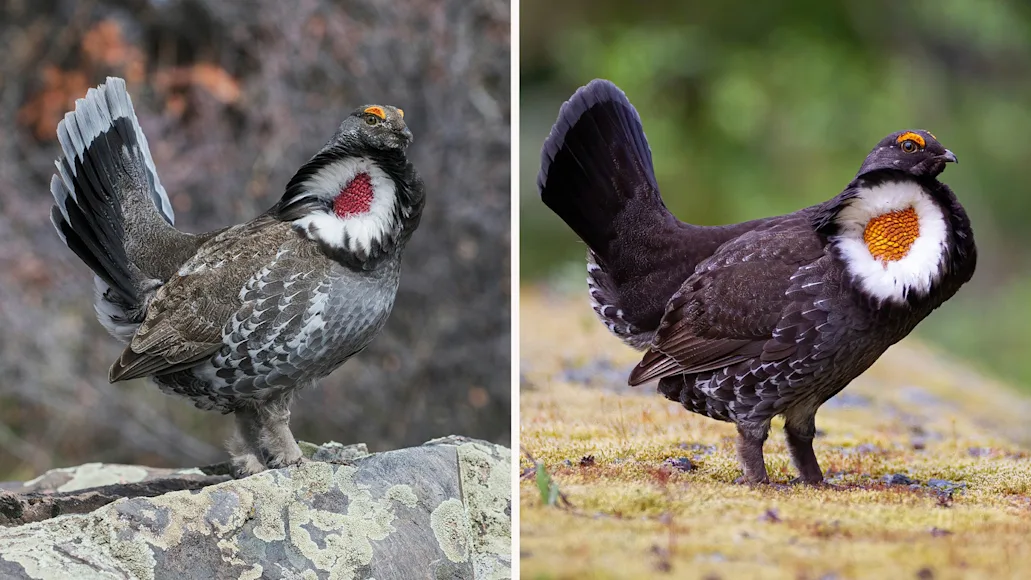In 2006, the American Ornithologists’ Union (AOU) took a closer look at the western bird known as the “blue grouse” and reclassified it into two separate species: the sooty grouse
and the dusky grouse
. Both are birds of the northwestern conifer forest. The dusky grouse inhabits the Rockies, while the sooty grouse lives closer to the coast, with a range that extends from California to Alaska.
Among the largest of North America’s native grouse
, the sooty and dusky grouse are birds of the far and mountain west. They were first identified during the Lewis and Clark Voyage of Discovery. Meriwether Lewis described a “pheasant” the party encountered in Idaho as “a large black species, with some white feathers irregularly scattered on the breast, neck, and belly.” Both species remain plentiful and are common sights to those who visit their habitats. Dusky and sooty grouse can be hunted, as well, with the sooty grouse in particular providing a unique spring hunt in Alaska, along with the regular fall season. Use this guide to better identify, locate, and hunt both species of blue grouse.

A male Dusky grouse displays its tail fan and red throat patch. NorthwestWildImages/Adobe Stock
Blue Grouse Appearance, Range, and Habitat
The sooty grouse, as its name suggests, is a dark, ashy gray in color, and those gray feathers completely boot the bird’s feet. As Lewis noted, the sooty grouse is a large bird. They weigh in at up to 3 pounds. The male’s dark gray tail feathers have a band of light gray on the tips that are especially visible when the bird displays and spreads those feathers. They also have yellow throat patches visible when they display, and “eyebrows” of the same color. Hens are more brown in color and also have some sooty gray feathers.
The dusky grouse is quite similar in looks and size to the sooty grouse. Both males and females have more white-tipped feathers and a generally lighter appearance. The most easily identifiable difference is that the dusky grouse has a red throat patch in contrast to the yellow/orange patch of the sooty grouse.
Both are birds of mountain forests, with dusky grouse generally living at higher elevations than sooty grouse. As such, sooty grouse are found primarily near the coast, from California to Alaska, while dusky grouse inhabit taller mountainous areas inland from the ocean from the Colorado Rockies all the way to Alaska. Both species rely on pine needles in the winter and feed on a variety of plants during warmer months. Insects are an important warm-weather food, especially for young birds. Dusky grouse migrate to higher elevations in cold weather to be closer to better sources of conifer needles.
Breeding
Dusky and sooty grouse both begin the breeding season perched in trees. They do establish territories and will warn off or, in the case of sooty grouse, sometimes fight other males. Dusky grouse perform “flutter flights,” where they beat their wings to attract females. Eventually, duskies descend from the trees to display—strutting, exposing their neck patches, and hooting.
Sooty grouse do all their displays high in the branches, hooting and making short flights, sometimes up to 100 feet in the air on what is called a “songpost” until a female approaches and responds with a call of her own. Then, the male drops down to the ground and struts. There is no evidence that they share in any nest-building or care of the chicks. Females of both species scoop nests in the ground and lay a clutch of one to a dozen eggs. They raise the young, which eventually leave them as these grouse are largely solitary.
Blue Grouse Conservation
Sooty grouse populations are declining slowly, most likely in areas where their habitat is lost to clearing for agriculture or development. Some forms of logging that stimulate second growth can be beneficial by encouraging the growth of plants the birds can feed on. Dusky grouse populations have remained stable since 1966.

A female Sooty grouse stands on a dead log. Radescu/Adobe Stock
Hunting Blue Grouse
Like any upland gamebird, sooty and dusky grouse are often found in good cover near food. Usually, that means clearings or meadows, where sunlight can promote second growth that produces both food and shelter for the birds. A dog that ranges much may well bump as many birds out of gun range as it produces in front of the gun. Many hunters have success without a dog, although there is no question that dogs are a huge help in finding downed grouse.
Elevations can be high, and air awfully thin in the blue grouse woods. You’ll want to be in shape, especially if you come from lower altitudes. Although these are large grouse, it doesn’t take a ton of gun to bring them down, and you will be walking a good distance between birds. Both species have a habit of flushing into trees, and it’s up to you whether your ethics permit a limb-swat or not. Limb-swatting dusky grouse with a blunt arrow or a .22 pistol is standard procedure among elk hunters looking for a tasty camp meal, too.
In Alaska’s spring sooty grouse, “hoot hunt,” limb shooting is the accepted method. The season runs into May, allowing hunters the unique opportunity of keying on the sound of male grouse hooting in trees to attract females and shoot them off the branch of their songpost. The low hoot can be hard to pinpoint, especially as birds usually sit high off the ground. One way to locate them is to get uphill of the hooting so you can look across and possibly spot one more easily. Birds are shot with a scoped .22 off the limb, and often, you’re making a shot of 60 yards or more.






